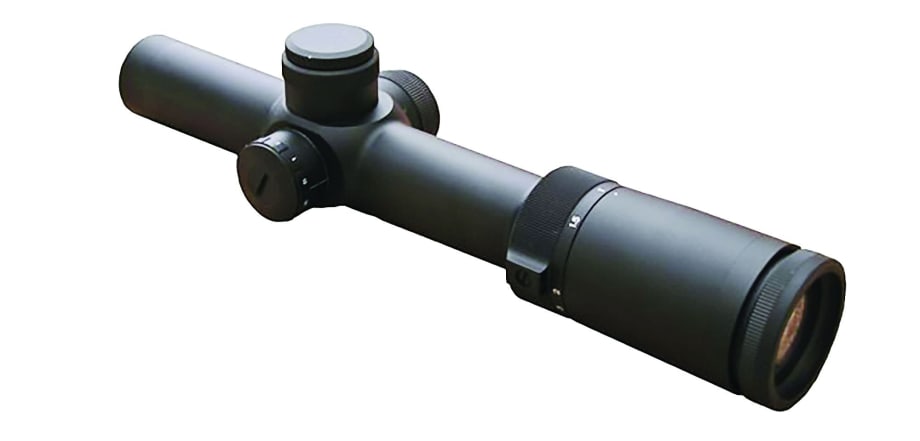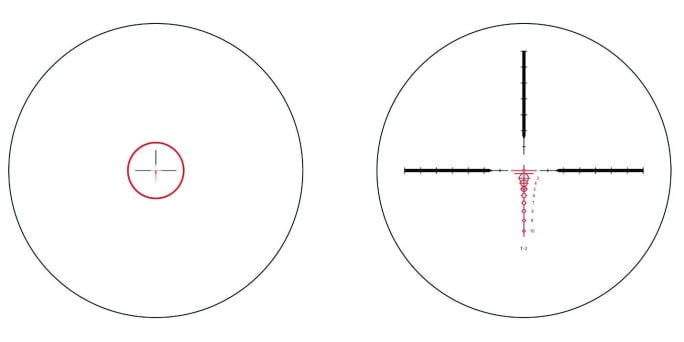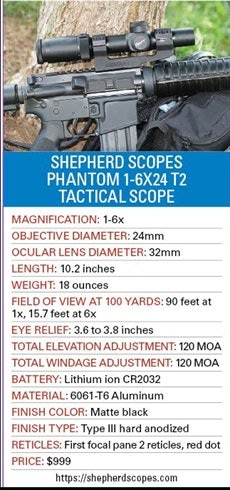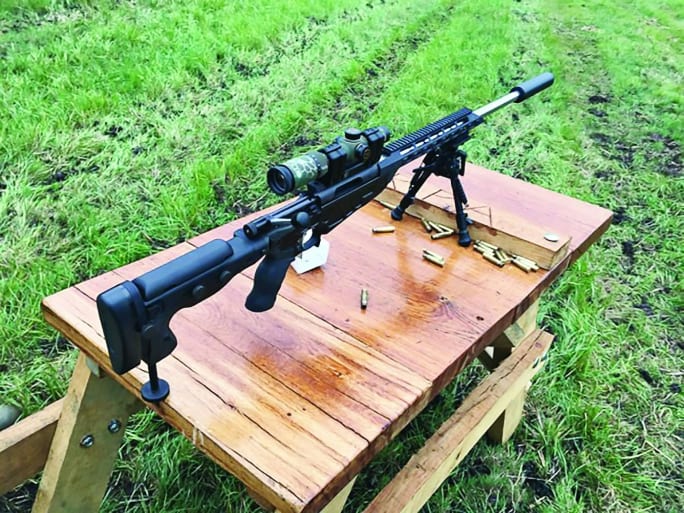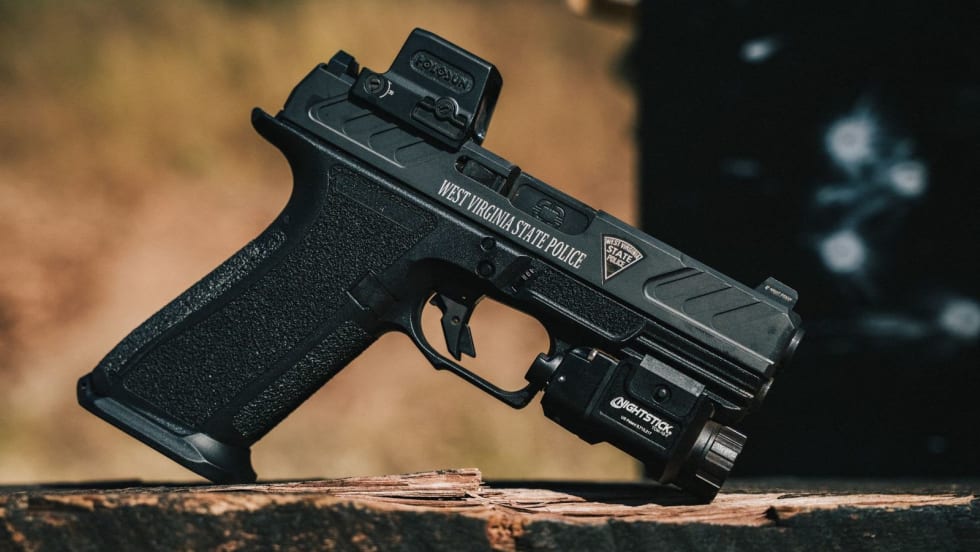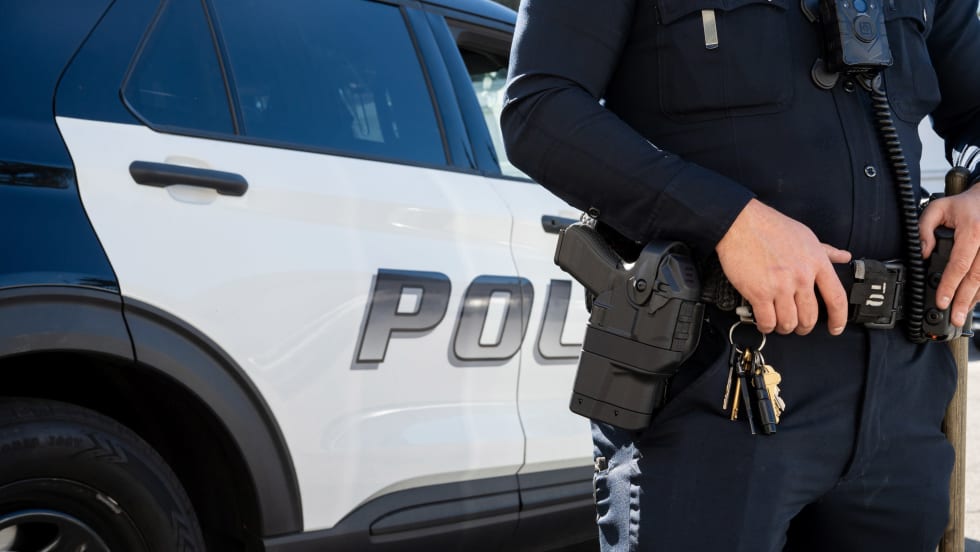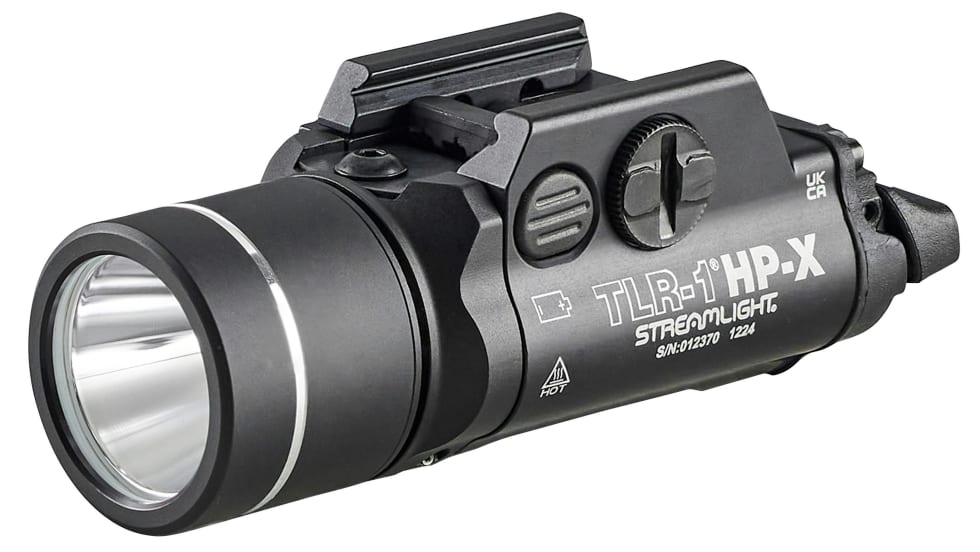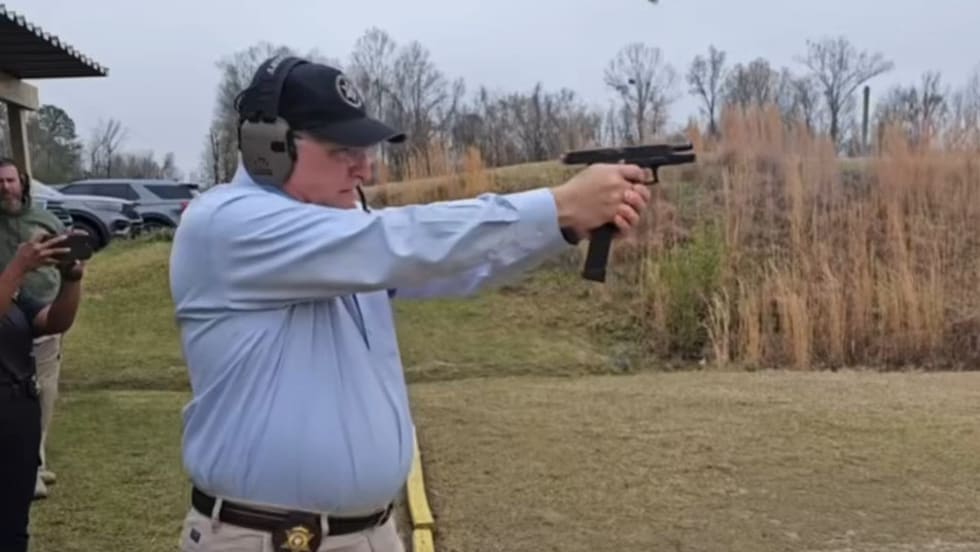Then I was browsing the Web for a quality scope for one of my hunting rifles when I found the Phantom series tactical scope from Shepherd Scopes. I was immediately intrigued with what I saw. I had used a Shepherd scope before, and I have long been impressed with the quality of the optics in these sighting systems.
I called Shepherd Scopes and spoke with Patrick Bass, VP, and he provided me with everything that I needed to know concerning the Phantom T2 and Shepherd's proprietary tactical cradle mount, which he suggested I use. Two days later the scope and mount were delivered to my door.
Features
Shepherd's Phantom 1-6X24 T2 tactical scope was designed to be fast and versatile. The illuminated first focal plane reticle gives you the speed of a halo sight at 1 power and a variable power magnification adjustment up to 6 power. This scope allows you to choose the sight/optics system that will provide a lighted halo for CQB, and a crosshair-style reticle at higher magnification levels to identify and engage the longer-range targets. The benefits of the higher magnification are many, including scouting, intelligence gathering, and target acquisition. Observing the distant subject to determine if the target in question is armed or not will provide the correct information for the shoot-don't-shoot decision. Past 30 yards it is sometimes difficult to see small objects or weapons with the naked eye.
Like the Shepherd Scopes that I have used before, the Phantom T2 includes the one-step range finding and bullet drop compensation system (BDC) The reticle features a series of circles spaced vertically below the horizontal crosshair. The circles vary correctly in size for 18 inches of subtension at increasing, corresponding range distances. These circles are spaced in accordance with the trajectory (drop) of the specific bullet fired. In the case of the Phantom T2, the trajectory is tuned for the .223 Remington and 5.56 NATO. The circles and the target are viewed in the same (first) focal plane, so the ranging system size does not change when the magnification is changed.
This is how simple the ranging/targeting system works. The weapon system is zeroed dead-on at 100 yards. Let's say for example, your target (18-inch area) fits inside the 400-yard circle, you not only have the range, but you are ready to squeeze the trigger, since that circle is also used for aiming at that distance. For reference, a standard NRA B-29 silhouette qualification target has a 21-inch width. From the center of the head to the center of the target (eyes to the X ring) is 17 inches. There are 1 MOA-style markings on both the horizontal and vertical stadia to use for windage compensation and measuring the size of distant targets.



